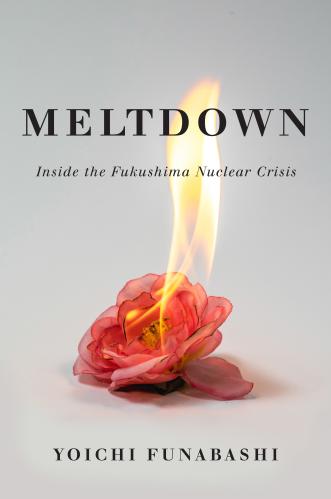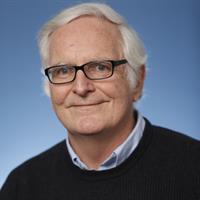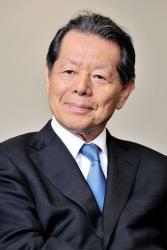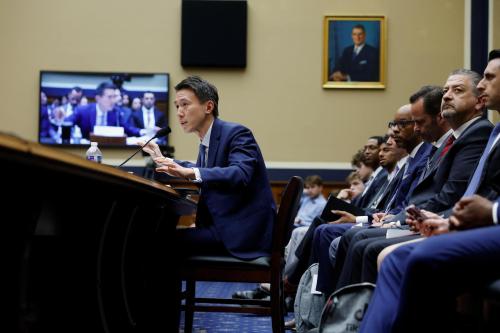March 2021 marks ten years since an earthquake off Japan’s Pacific Coast and the tsunami it caused led to reactors at the Fukushima Daiichi nuclear power plant to melt down, releasing radiation and forcing the government to evacuate over 100,000 residents in surrounding areas. As the author of a new book from the Brookings Institution Press writes, failures at all levels of Japan’s government and private sector worsened the human and economic impact of the disaster and ensured that its consequences would endure for years to come.
On this episode of the Brookings Cafeteria, Brookings Press Director Bill Finan interviews Yoichi Funabashi, author of “Meltdown: Inside the Fukushima Nuclear Crisis.” Funabashi, an award-winning Japanese journalist, columnist, and author, and now chairman of Asia Pacific Initiative, interviewed more than 300 government officials, power plant operators, and military personnel to provide a meticulous recounting and analysis of the struggle at all levels to contain the disaster.
Also on this episode, Senior Fellow Sarah Binder explains what’s been happening in Congress in the eight weeks since the insurrection at the U.S. Capitol. She examines how Congress is working so fast, what unified party control means for Democrats, and asks, will it last? Listen to her piece on SoundCloud.
Subscribe to Brookings podcasts here or on iTunes, send feedback email to BCP@Brookings.edu, and follow us and tweet us at @policypodcasts on Twitter.
The Brookings Cafeteria is part of the Brookings Podcast Network.
EXCERPTS FROM THE DISCUSSION:
FINAN: … I want to tell listeners that your book is a tour de force of what happened at Fukushima. There’s a focus on individuals inside the plant and out. Literally an hour by hour accounting from the moment the plant was hit by the tsunami, of the initial hours, the struggle of the workers to understand what had happened. The blackout, as you mentioned, where there was no electricity. The first attempts to put in place the emergency measures, reading manuals by battery light, just the human drama. It’s an immense canvas that you’ve written and sketched out of what happened. And I want to ask, how were you able to capture this level of detail, the thinking of the people in the plant? I know you interviewed quite a few; it’s an amazing recapture. You feel like you’re right there.
FUNABASHI: I was very fortunate to have chances to talk with the people on the ground, including operators at the plant, Fukushima Daiichi, and also Daini as well. And I also interviewed many government officials, particularly the first responders, firefighters, police, and Japanese military, what we call Self Defense Forces. And also, I interviewed many Americans who actually came to Japan to rescue the people there. The United States was not under any treaty obligation to come to Japan, to help Japan, because it was not a military conflict. But nonetheless, there were more than 20,000 Americans—Marines, sailors, officers—coming to rescue Japan. So I interviewed many of them.
Basically, people were just thrown into the crisis without any preparation, particularly among TEPCO workers and local government officials. So they really had to struggle to fight against adversity without being fully prepared for that. And so the biggest puzzle to me was that, why Japan? Which is a well advanced country, simply failed in preparing, being prepared for this. And I was struck to learn that that ideology and belief system was the core problem. That is that making changes, making better preparations, more serious preparations for the severe accident—extended loss of power provided for that plant—would be an admission that the existing precautions and regulations were insufficient, and that operators—that is, TEPCO—did not possess absolute safety. So, this myth of absolute safety actually was that root cause. That they were actually they found themselves caught up in their own trap, in my view.
And one of the reasons why they developed this kind of belief system was that because of people’s strong resistance and opposition to nuclear energy. And that was connected to the traumatic experience with Hiroshima and Nagasaki. So, in order to overcome the people’s profound fear, the “nuclear village,” what we call the promoters of nuclear energy—government agencies, companies, politicians, and officials and academics—they were determined to demonstrate that Japan’s nuclear regulation is the most strictest in the world and people do not need to worry about that.
This is a really paradoxical problem.





Commentary
PodcastLessons from the Fukushima nuclear meltdown, 10 years on
March 5, 2021